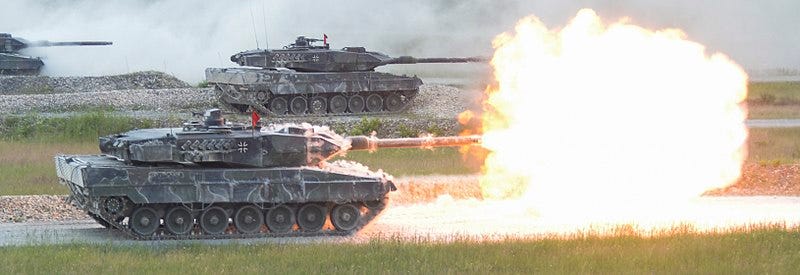Germany Is the Main Provider of Tanks to Ukraine, Putting Berlin in a Position It Sought to Avoid
Ukraine will receive hundreds of main battle tanks during the coming months. Berlin had hoped its European allies would provide a significant number of tanks to Kiev, but German-made Leopard 1 and 2 tanks will make up the vast majority of Western-made armor sent to Ukraine.
On Tuesday, Berlin announced that, along with the Netherlands and Poland, Germany would send over 200 Leopard-series tanks to Ukraine. Ukraine’s Defense Minister Oleksiy Reznikov said he envisions “20-25 of these tanks by the summer, about 80 by the end of the year, and more than 100 Leopard 1 tanks by 2024.”
Germany and Poland previously committed to sending over two dozen newer Leopard 2 tanks to Ukraine.
Last week, the Swiss outlet, NZZ, reported German leader Olaf Scholz resisted international pressure to send tanks to Ukraine but ultimately relented after it appeared other NATO members would send a significant number of tanks.
Now, it appears the situation Scholz sought to avoid has become a reality. According to the Wall Street Journal, after Berlin committed to sending main battle tanks to Kiev last month, other Western countries started “dragging their feet.”
Washington says it will send 31 American-made M1 Abrams tanks to Ukraine. However, the tanks are unlikely to reach the battlefield for years. France has ruled out sending any of its tanks to Ukraine.
Britain has agreed to send 14 of its Challenger 2 main battle tanks to Ukraine. London cannot meet Kiev’s significant armor needs, having just over 200 tanks. Portugal will only send three Leopard 2 tanks to Ukraine. Madrid says it has Leopard 2 tanks to send to Kiev, but the armor would require an upgrade before engaging Russian forces.
Finland is holding off sending tanks to Ukraine until it is a member of the North Atlantic alliance. Turkey is refusing to approve Sweden and Finland’s NATO bids. Currently, there is no indication Stockholm and Helsinki are close to resolving their dispute with Ankara.
The lack of other NATO-made tanks has placed Berlin precisely in the position Scholz had hoped to avoid. “Germany will likely have to be the biggest contributor to the European tank initiative because it has the largest combined stock owned by the industry and the armed forces among the countries willing to participate,” said Minna Alander, a research fellow at the Finnish Institute of International Affairs told the WSJ.


